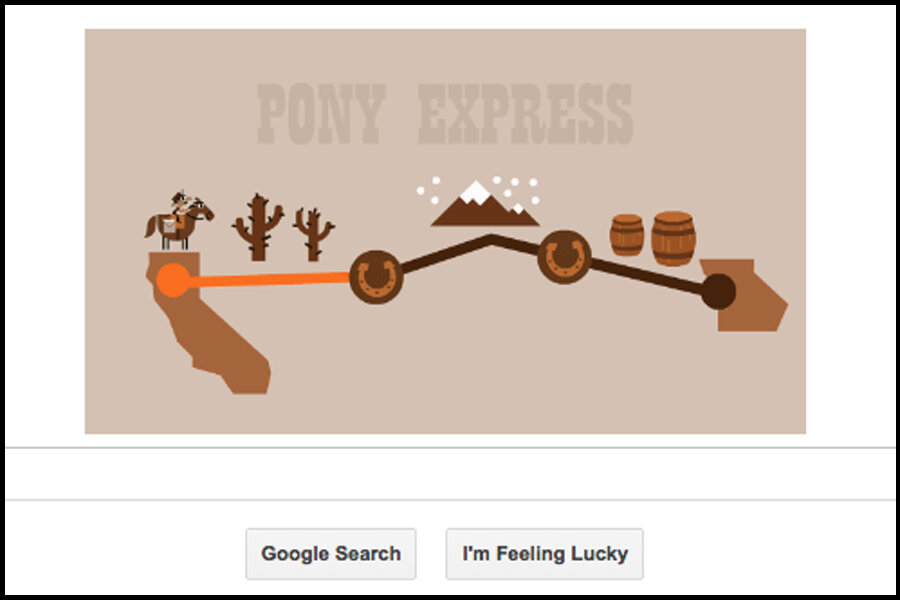Why the Google Doodle is honoring the Pony Express
Loading...
Tuesday's Google Doodle celebrates the 155th anniversary of the first Pony Express mail delivery with an interactive game that shows how important this primitive communication system was to 19th century gold miners and their families back east.
In the game, you must maneuver a mail-toting equestrian across the rough terrain of the Wild West, retrieving letters and avoiding obstacles that get increasingly difficult as you progress through the three levels.
“The Pony Express felt like a great game concept to us at Google. We've made time-based games in the past so our new idea was simple. Collect letters, avoid obstacles and aim for the ultimate 100 letter delivery,” the doodle design team said in a statement. “We know everyone is busy these days but the Pony Express needs you. And ultimately, whatever happens in life, what's more important than earning trust and respect from a horse?”
Prior to the Gold Rush of 1849, most Americans lived to the east where there was an established postal service. However, when approximately 300,000 people flooded into California, families were separated by more than 1,500 miles of dangerous and largely uncharted land, making communication with the East Coast nearly impossible.
Businessmen William H. Russell, Alexander Majors, and William B. Waddell founded the Pony Express on April 3, 1860 to combat the communication problem between the East and West Coasts. The first delivery was completed 11 days and 12 hours later on April 14. Riders would travel on lightweight ponies from Sacramento, Calif., to Saint Joseph, Mo., changing steads along the way in order to make the most efficient time possible.
The Pony Express was not financially successful and the invention of the telegraph line ended its reign only 19 months after it began, but it was an important innovation in communication. In its heyday, the Pony Express was an intricate network consisting of 100 stations, 80 riders, and as many as 500 horses. Despite the dangerous route, only one mail delivery was ever lost.
“It holds a special place in America’s heart and the doodle team wanted to celebrate its accomplishments,” animator Nate Swinehart says in a video about the process of creating the doodle. “So instead of a static illustration they set out to take you back to the wild west up close and personal with a pony express game.”
While typically only one artist works on each doodle, this interactive endeavor required a whole team, which consisted of Mark Ivey, Kris Hom, Brian Murray, Kevin Laughlin, Greg Capuano, and Matt Cruickshank.
Despite the fact that the Pony Express functioned only in the United States, the doodle was used in 18 countries on April 14.









